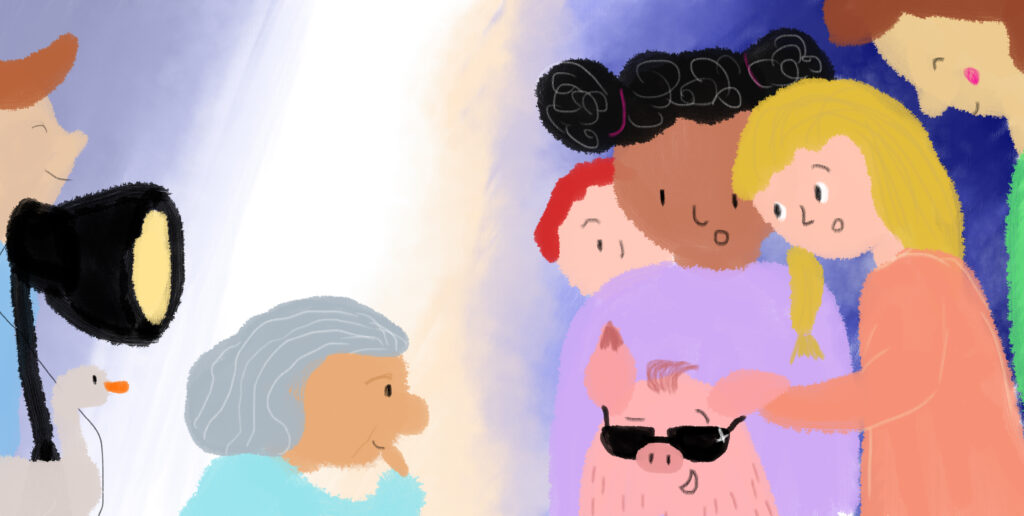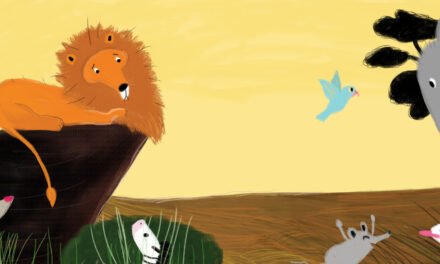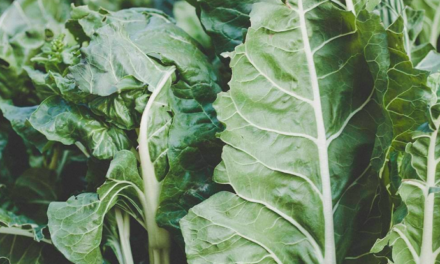Two criteria when choosing vegan books for children
If you want to choose the right book for your child, don’t let the child choose the book. I’m kidding, of course! It is nice when a child wants to choose a colorful book independently as this often means they are willing to read it. However, the role of parents in choosing books that children will read is also very important. There are many criteria by which parents can choose books, and when it comes to choosing the right vegan children’s books, it is important to pay special attention to two things: (1) Whether the book is written in a way that is emotionally acceptable for your child and (2) whether it meets literary aesthetic criteria or only has an educational and ethical role.
Writing about violence in a non-violent way
Today, through children’s literature, there is more and more talk about ecology and the exploitation of animals, which certainly belongs to difficult life topics, so it is important to consider the way in which they are presented to the young reader. From ancient times, ways to approach children regarding sensitive topics have been sought, and more recently, developments in psychology have studied the child’s psyche and their unique world.
When choosing any book, it is important that it is emotionally and intellectually appropriate for the age of the child, and this is especially true for vegan stories that talk about very sensitive topics such as violence against animals. The writers of vegan books face the challenge of how to write about violence in a non-violent way and in a way that will not scare children and cause them nightmares. Some vegan authors have received harsh criticism from parents and even psychologists that the way they write about violence is not adequate for children because violence is described and illustrated in picture books quite directly.

Parents generally do not buy vegan books for children so that children can learn the terrible truth of where meat comes from. They have probably already talked to them about these topics, but a story can bring these facts closer to children in a literary way. Parents can tell children the fact that cows, pigs, sheep, and chickens have feelings, and that they are intelligent and sociable, but children can experience this more fully through a creative and intriguing story. Reading stimulates a child’s imagination and provides an important visual experience. Therefore, it is important that words and illustrations in vegan books be at the level of the child’s emotional and intellectual development, while still conveying the message the author wants to deliver.
The literary value of vegan books for children
Children’s literature is also an art, not just a means of education or ideologization. Although the main feature of vegan children’s books is educational, it can be much more than that, depending on how the author approaches the topic. Writing well for children is just as hard as it is for adults, and even harder because children read with their hearts and we can’t convince them that something is good just because some authority says so. Vegan stories for children need to be compelling and artistically impressive to capture the imagination of the young reader.

When choosing the right vegan books for children, parents should have in mind that vegan children’s literature is divided into two categories: those who talk about vegan topics at the fact level, and those who talk about vegan topics in a literary way. Given that one of the roles of children’s literature is to stimulate and develop children’s imagination, it is also desirable that books dealing with vegan topics have literary and aesthetic value. The message that “animals are our friends and not food” can be presented in a literary and artistic way that will appeal to non-vegan readers as well. Education is not only the acquisition of knowledge but also the adoption of spiritual and ethical values that enable the building of healthy attitudes and personality development.













